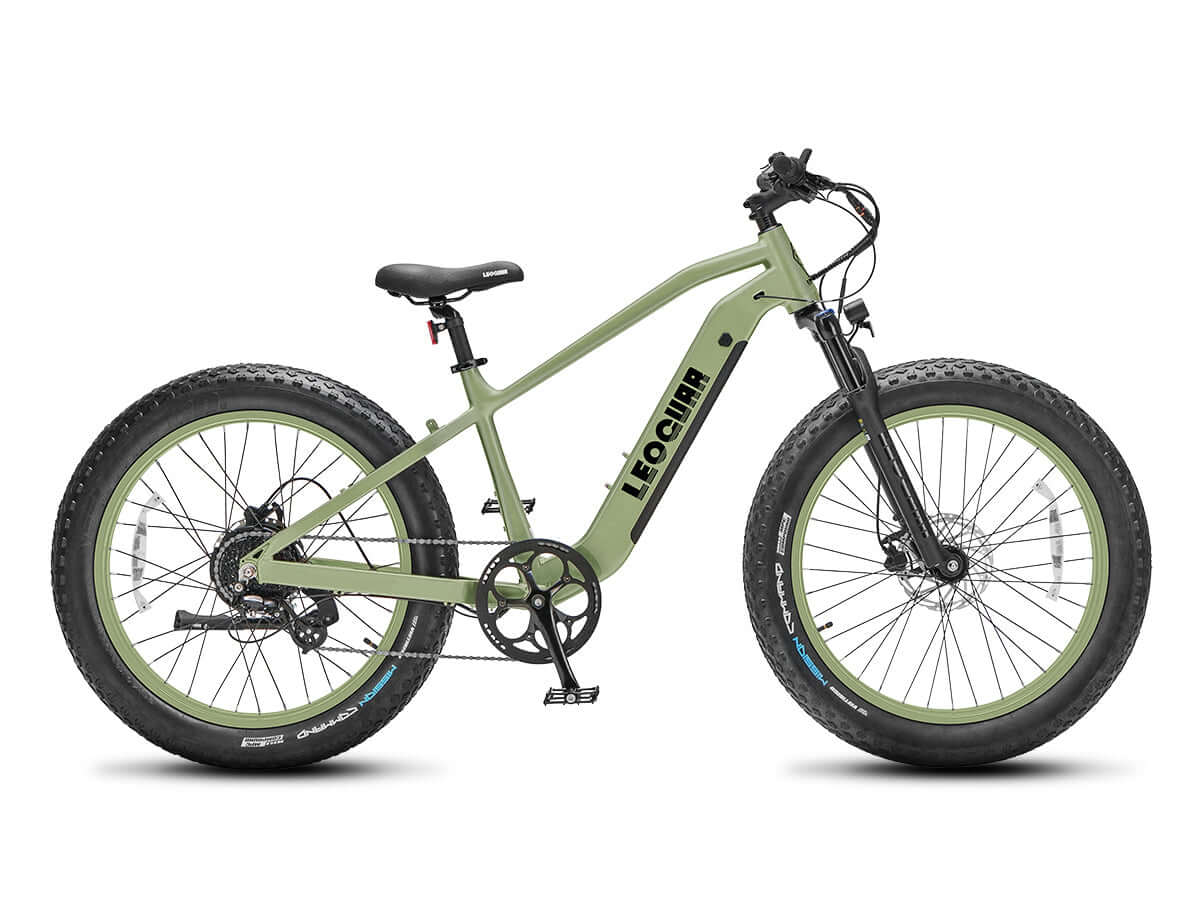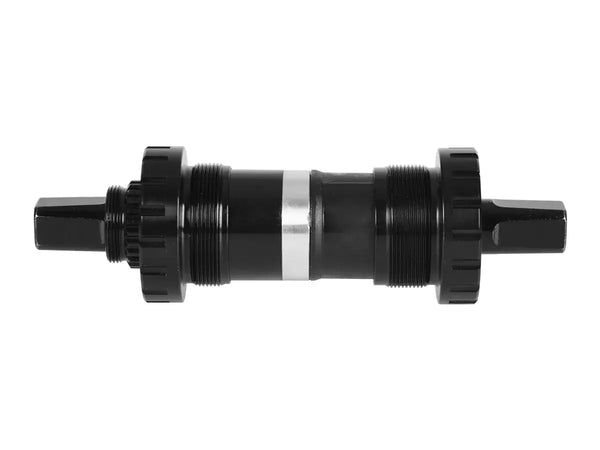
Torque Sensor Ebike Explained: How It Will Transform Every Ride
Have you ever ridden an electric bike that feels jerky and unpredictable? You start pedaling, and suddenly the motor lurches forward with an abrupt, all-or-nothing force that feels disconnected from your effort. It can feel unnatural and frustrating. What if there was a way to create a true partnership between you and your e-bike, where the power feels like part of your own body? That key to a more smooth, natural, and truly enjoyable ride is a part called a torque sensor.
A torque sensor e-bike works completely differently. Instead of just detecting if you are pedaling, it measures how hard you are pedaling, which lets it deliver smooth, natural power that matches your exact input. It's the difference between being awkwardly pushed along and feeling like you suddenly have superhuman legs. This guide will explain the torque sensor ebike, show how it changes the ride, and help you decide if this smarter experience is right for you.
The 'Aha!' Moment Explained
So what makes a torque sensor e-bike feel so different? The easiest way to understand it is with a simple comparison: a dimmer switch versus a regular light switch. A cadence sensor, the more common and cheaper option, acts like a light switch. As soon as you start turning the pedals, the sensor detects the motion and tells the motor to turn ON with a pre-set level of power based on your chosen help level. It doesn't matter if you're pedaling gently or hard; the motor gives the same amount of help. Once you stop pedaling, the switch flips OFF, which creates that jerky, on-or-off feeling.
A torque sensor, on the other hand, is the dimmer switch. It constantly measures the force you apply to the pedals, and when you push lightly, the motor provides a small amount of help. As you push harder to climb a hill or speed up, the sensor detects this increased pressure and instantly tells the motor to provide more power. If you ease off, the motor help fades out just as smoothly, creating a ride that matches your effort and amplifies your power rather than just taking over. It's this responsive help that experts describe as a more natural-feeling ride. You feel connected to the bike, always in control, and the motor's help feels like a natural tailwind, not a sudden push from behind.
Effort into a Seamless Ride
Talking about a "natural feel" is one thing; experiencing it in real situations is another. The true value of a torque sensor ebike becomes clear the moment you move beyond the specs and onto the road or trail. Here is what that smooth integration of human and machine actually feels like.
Starting from a stop, especially on a hill, is where the difference is most obvious. On a cadence-based bike, you might experience a slight delay followed by a sudden burst of power, which can feel unsettling. With a torque sensor, the moment you apply pressure to the pedal, the bike moves forward with you smoothly. The help is immediate but controlled, perfectly matching the force you use to get moving. There is no lag, no jolt—just a smooth, confident start every time.
Moving through slow city traffic or crowded bike paths becomes far less stressful. The precise control allows for tiny adjustments in speed, and if you need to slow down for a pedestrian, simply ease up on the pedals and the motor help dials back instantly. Need a tiny bit of help to maintain balance at a near-stop? A gentle touch on the pedals provides just enough power to keep you stable without feeling like the bike is trying to run away from you. This level of control is something a simple on-off system cannot copy.
When you face a challenging climb, a torque sensor ebike makes you feel powerful. As the hill gets steeper, you naturally push harder on the pedals, and the sensor reads this increased effort and the motor responds by delivering more power to help you maintain your pace. The climb is still a workout—you are still doing the work—but it feels manageable, as if you have the legs of a professional cyclist. You're conquering the hill, not just being carried up it.
For those who ride for exercise, a torque sensor ebike is a far better fitness tool. Because the help is always based on your input, it encourages you to put in the effort, and you can't just spin the pedals without force and expect the motor to do all the work. It rewards your hard work with matching help, allowing you to ride longer, tackle more challenging routes, and maintain your heart rate in your desired zone while feeling like you're riding a high-performance bicycle.
Torque vs. Cadence
Choosing between a torque sensor and a cadence sensor is one of the most important decisions when buying an e-bike. While cadence sensors are common on many entry-level and budget-friendly models, understanding the trade-offs is key to finding the bike that best suits your needs. Let's put them head-to-head.
| Feature | Torque Sensor | Cadence Sensor |
|---|---|---|
| Ride Feel | Natural, responsive, and smooth. Feels like riding a traditional bike, but with "super-powered" legs. | "On/Off" power delivery. Can feel abrupt, jerky, or like a scooter when the motor kicks in. |
| Control & Precision | Excellent. Allows for fine-tuned speed adjustments, making it ideal for technical terrain and slow-moving traffic. | Basic. Power delivery is fixed for each assist level, offering less precision at low speeds. |
| Efficiency & Range | Generally more efficient. It only delivers the power you need, when you need it. Studies show this can extend battery range by 15-30% over an identical system with a cadence sensor. | Less efficient. Often delivers full power for an assist level even when not needed, which can drain the battery faster. |
| Hills & Terrain | Superior. Power output dynamically matches the effort required for steep inclines and varied terrain, providing a consistent feel. | Can struggle. May provide too little power on steep sections or an unnatural surge of power on slight inclines. |
| Rider Engagement | High. Encourages and rewards active pedaling and physical effort. A better tool for genuine exercise. | Low. Can lead to "ghost pedaling" where the rider spins pedals with no force just to keep the motor engaged. |
| Cost | Higher. The advanced components and calibration add to the bike's overall price, with most models starting above $1,800. | Lower. The simpler technology makes it the standard for entry-level and budget-friendly e-bikes. |
| Complexity | More complex system with sensitive strain gauges, often integrated into the bottom bracket or motor. | Simpler system, typically using a magnet on a crank arm and a sensor on the frame. Easier to maintain or replace. |
For those who want a visual demonstration of these differences in action, there is a detailed video comparison from GCN Tech that does an excellent job of showing how each system behaves on the road.

Is This E-Bike For You?
Ultimately, the best sensor technology depends entirely on the rider. A torque sensor e-bike isn't universally "better" for everyone, but for certain types of cyclists, it is a game-changer. Let's identify who benefits most from this smart technology.
You are a Cycling Purist:
If you love the feeling of riding a traditional bicycle—the connection to the road, the rewarding feeling of your own effort powering you forward—then a torque sensor ebike is for you. It doesn't rob you of that experience; it enhances it, and the motor help is so smooth that you often forget it's there, simply feeling stronger and faster. It preserves the purity of cycling.
You are a Performance-Oriented Rider:
For mountain bikers, gravel riders, and road cyclists who demand precision and control, a torque sensor is essential. When navigating a technical climb or speeding out of a corner, you need the power to be an instant and predictable extension of your pedal stroke, and the matching help allows you to maintain traction, balance, and momentum in situations where a cadence sensor's sudden jolt would be disruptive or even dangerous. This is why high-performance mid-drive motor systems from brands like Bosch, Shimano, and Brose almost exclusively use torque sensors.
You are a Fitness-Focused Cyclist:
If your primary goal is exercise, a torque sensor ebike is the perfect training partner. It ensures you are always contributing to the effort, making it impossible to "cheat" the workout, and you can set a lower help level for a challenging ride or a higher one to help you keep up on a group ride without getting a free pass. It allows you to push your limits and get a fantastic workout, with the motor acting as a safety net that helps you get home if you overdo it.
You are a Discerning Urban Commuter:
For the daily commuter, control is safety. A torque sensor ebike provides the smooth acceleration needed to get ahead of traffic at a green light and the delicate control required to filter through gridlock, and the natural power delivery reduces mental fatigue and allows you to focus on the road, not on taming an unruly motor. The increased efficiency also means you're less likely to suffer from range anxiety on a longer commute.
On the other hand, if you are a very casual rider who wants a simple, throttle-like assist for cruising on flat paths, or if your budget is the primary deciding factor, a cadence-based e-bike can still be an excellent and affordable choice. But for those who refuse to compromise on ride quality, a torque sensor ebike is the clear winner, offering a level of refinement and rider-machine integration that truly changes the experience for the better.
Frequently Asked Questions
1. Q: How much more expensive are torque sensor e-bikes compared to cadence sensor models?
A: Torque sensor e-bikes typically cost $300-800 more than similar cadence sensor models. Most quality torque sensor e-bikes start around $1,800, while basic cadence sensor bikes can be found for under $1,000. The higher cost reflects the more advanced technology and precision components required.
2. Q: Do torque sensors require more maintenance than cadence sensors?
A: Torque sensors are generally more complex but don't require significantly more maintenance when properly manufactured. They are typically integrated into the motor or bottom bracket area and are well-protected from the elements. However, if repairs are needed, they may be more expensive due to the sophisticated components involved.
3. Q: Can I retrofit my existing e-bike with a torque sensor?
A: Unfortunately, retrofitting is usually not practical or cost-effective. Torque sensors are typically integrated into the motor system or bottom bracket during manufacturing. The cost and complexity of retrofitting would likely exceed buying a new torque sensor e-bike.
4. Q: Do torque sensor e-bikes work well for riders who aren't very strong or fit?
A: Absolutely. Torque sensors actually work better for riders of varying fitness levels because they amplify whatever effort you put in. Even gentle pedaling pressure triggers proportional assistance, making it easier for less fit riders to enjoy cycling while still getting exercise that matches their ability level.
5. Q: How do torque sensor e-bikes perform in different weather conditions?
A: Torque sensor e-bikes perform consistently well in various weather conditions. The sensors are sealed and protected from moisture, and the smooth power delivery actually provides better control in slippery conditions compared to the sudden power surges of cadence sensors. However, like all e-bikes, the battery range may decrease in very cold weather.









































Leave a comment